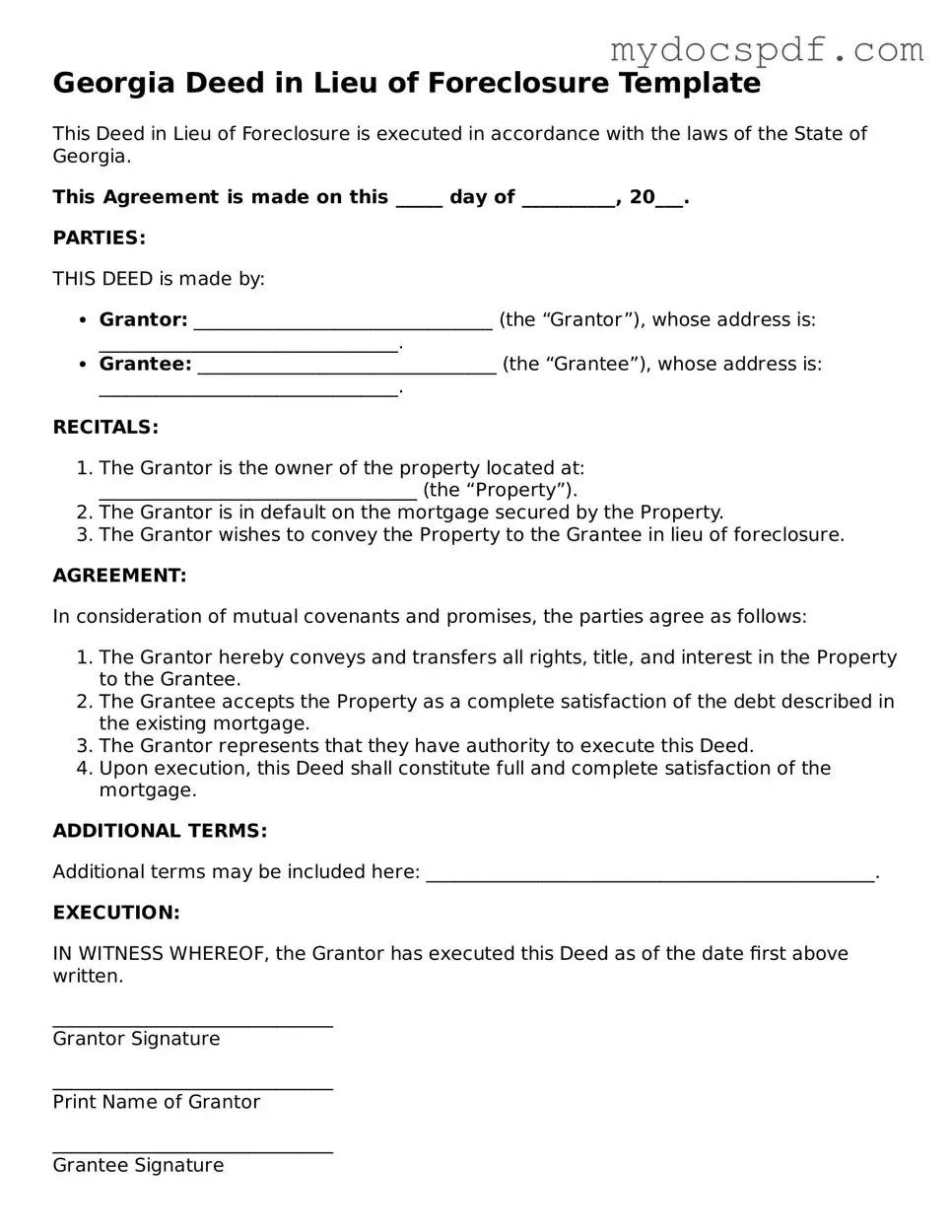Georgia Deed in Lieu of Foreclosure Template
This Deed in Lieu of Foreclosure is executed in accordance with the laws of the State of Georgia.
This Agreement is made on this _____ day of __________, 20___.
PARTIES:
THIS DEED is made by:
- Grantor: ________________________________ (the “Grantor”), whose address is: ________________________________.
- Grantee: ________________________________ (the “Grantee”), whose address is: ________________________________.
RECITALS:
- The Grantor is the owner of the property located at: __________________________________ (the “Property”).
- The Grantor is in default on the mortgage secured by the Property.
- The Grantor wishes to convey the Property to the Grantee in lieu of foreclosure.
AGREEMENT:
In consideration of mutual covenants and promises, the parties agree as follows:
- The Grantor hereby conveys and transfers all rights, title, and interest in the Property to the Grantee.
- The Grantee accepts the Property as a complete satisfaction of the debt described in the existing mortgage.
- The Grantor represents that they have authority to execute this Deed.
- Upon execution, this Deed shall constitute full and complete satisfaction of the mortgage.
ADDITIONAL TERMS:
Additional terms may be included here: ________________________________________________.
EXECUTION:
IN WITNESS WHEREOF, the Grantor has executed this Deed as of the date first above written.
______________________________
Grantor Signature
______________________________
Print Name of Grantor
______________________________
Grantee Signature
______________________________
Print Name of Grantee
STATE OF GEORGIA
COUNTY OF ________________________________
On this _____ day of __________, 20___, before me personally appeared ________________________________ (Grantor), and ________________________________ (Grantee), to me known to be the persons described in and who executed the foregoing instrument, and they acknowledged that they executed the same.
______________________________
Notary Public
My Commission Expires: ________________
